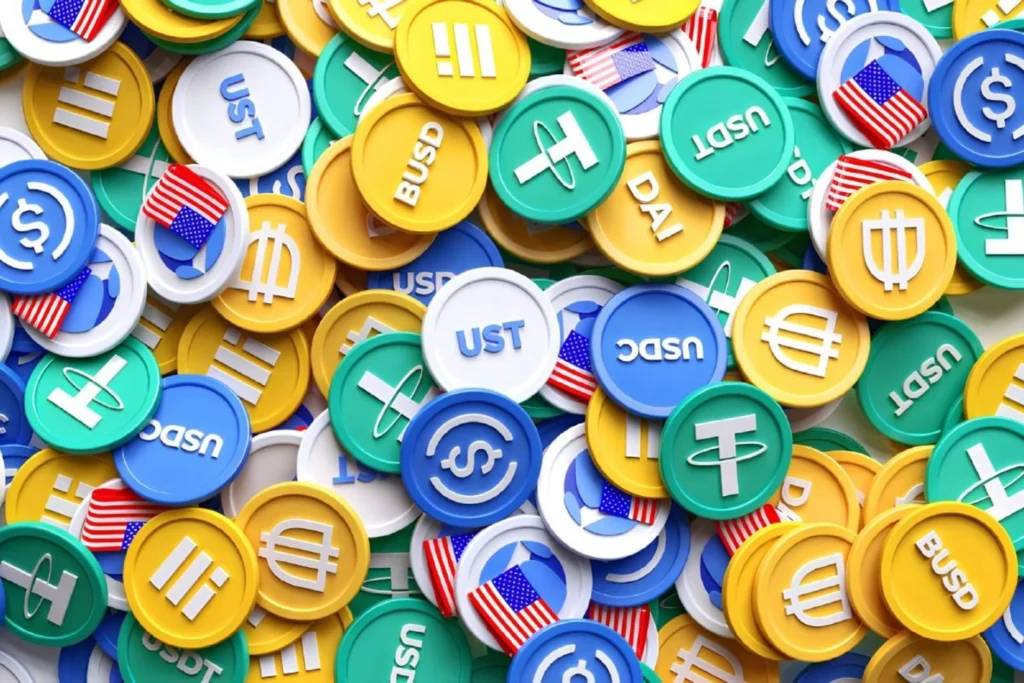Stablecoins bridge the gap between traditional money and cryptocurrencies. They maintain steady values by tying to assets like the US dollar. People use stablecoins for quick, low-cost transactions without wild price swings. This article dives into what stablecoins are and why they shape future payments. Readers gain practical advice on using them safely. Discover how stablecoins simplify daily spending, from online shopping to global transfers. Stay ahead in finance by learning their benefits and risks now.
Understanding Stablecoins
Stablecoins offer stability in the volatile crypto world. Developers design them to hold consistent values. Users trade them easily on exchanges.
Experts define stablecoins as digital tokens pegged to fiat currencies. They reduce risks from price fluctuations. Businesses adopt them for seamless payments.
Stablecoins work through reserves or algorithms. Issuers back them with real assets. This setup ensures reliability.
Users benefit from fast settlements. Transactions complete in seconds. Fees stay low compared to banks.
Types of Stablecoins
Explore different types to fit your needs. Each type serves unique purposes.
- Fiat-collateralized: Backed by cash reserves. Examples include USDT and USDC.
- Crypto-collateralized: Secured by other cryptocurrencies. DAI stands out here.
- Algorithmic: Use smart contracts to adjust supply. They aim for balance without reserves.
Choose based on trust and use case. Fiat types suit beginners.
Everyday Payments
Stablecoins transform how people pay daily. Consumers send money across borders instantly. Merchants accept them without conversion hassles.
Advice: Start small. Buy them on reputable exchanges. Link them to digital wallets.
Monitor regulations. Governments eye stablecoins for compliance. Stay informed to avoid issues.
Diversify holdings. Mix them with other assets. This hedges against depegging risks.
Use for remittances. Families save on fees. Transfers arrive faster than wires.
Comparison of Popular Stablecoins
| Stablecoin | Issuer | Backing | Key Advantage | Potential Risk |
| USDT | Tether | Fiat reserves | High liquidity | Transparency concerns |
| USDC | Circle | US dollars | Strict audits | Regulatory scrutiny |
| DAI | MakerDAO | Crypto assets | Decentralized control | Volatility in collateral |
| BUSD | Binance | Fiat holdings | Easy integration | Exchange dependency |
This table highlights differences. Select one that matches your goals.
Common Mistakes
Avoid pitfalls to maximize benefits.
- Ignoring wallet security: Hackers target unsecured accounts. Use two-factor authentication always.
- Overlooking fees: Exchanges charge hidden costs. Compare rates before trading.
- Forgetting tax rules: Transactions may trigger taxes. Track every move diligently.
- Chasing yields blindly: High-interest offers carry risks. Research platforms thoroughly.
FAQ
What are stablecoins, and how do they differ from Bitcoin?
Stablecoins peg to stable assets for consistent value. Bitcoin fluctuates wildly. As per economist Gary Gorton in his paper, this peg makes them ideal for payments.
What risks should users watch?
Depegging occurs if reserves fail. Regulatory changes add uncertainty. BIS experts in their working papers stress reserve audits to mitigate these.
How can I start using them for payments?
Open a wallet app. Buy via exchanges. Send to merchants directly. Scholarly articles from ECB recommend starting with audited ones like USDC.
Are they the best for international transfers?
Yes, they cut costs and time. Compared to wires, they save up to 90%. Analysts like those at McKinsey note their role in modern finance.
Do they face future regulations?
Governments plan stricter rules. Experts from Brookings Institution predict balanced policies to foster innovation safely.
Conclusion
Stablecoins pave the way for efficient finance. They empower users with control and speed. Take action: Research it today. Integrate it into your payments. Watch your finances evolve. Join the shift to smarter money management.

